Generating Gaussian random fields using surface finite element methods

Erik Jansson
Slides available at slides.com/erikjansson
Joint work with:
- Mihály Kovács (Pázmány Péter Catholic University/Chalmers)
- Annika Lang (Chalmers/University of Gothenburg)
- Mike Pereira (Mines Paris - PSL University)
Made possible by:
-
Bolin, D., Kirchner, K., Kovács, M., Numerical solution of fractional elliptic stochastic PDEs with spatial white noise, IMA J. Numer. Anal., 40(2):1051–1073, 2020
-
Dziuk, G., and Elliott, C. M., Finite element methods for surface PDEs. Acta Num., 22:289–396, 2013.
-
Lang A., Pereira, M., Galerkin–Chebyshev approximation of Gaussian random fields on compact Riemannian manifolds (preprint)
-
Whittle, P., Stochastic processes in several dimensions. Bull. Inst. Int. Stat., 40:974–994, 1963.


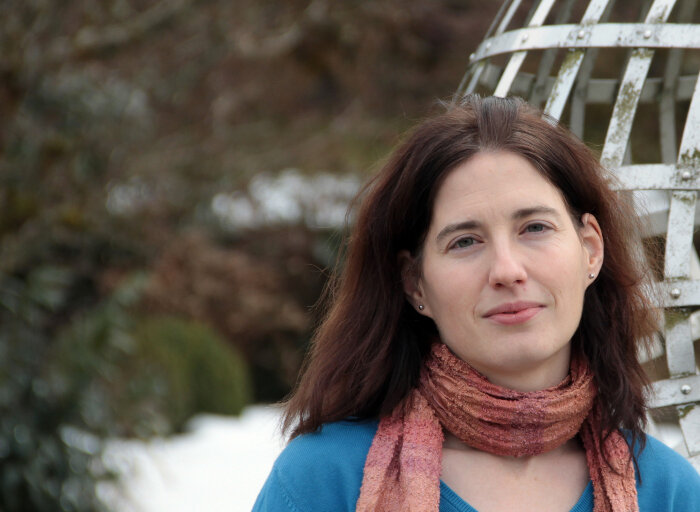
GRFs on manifolds
The SPDE view: GRFs are solutions to elliptic stochastic partial differential equations on manifolds:
In this talk: Manifolds = compact, boundary–less 2D embedded surfaces in \(\mathbb{R}^3\)

Elliptic differential operator
White noise
Two questions:
Computation
Statistics
GRFs on manifolds
The SPDE view: GRFs are solutions to elliptic stochastic partial differential equations on manifolds:
In this talk: Manifolds = compact, boundary–less 2D embedded surfaces in \(\mathbb{R}^3\)

Elliptic differential operator
White noise
Two questions:
Computation
Statistics
GRFs on manifolds
The SPDE view: GRFs are solutions to elliptic stochastic partial differential equations on manifolds:
In this talk: Manifolds = compact, boundary–less 2D embedded surfaces in \(\mathbb{R}^3\)

Elliptic differential operator
White noise
Two questions:
Sampling
Statistics
Main computational tool: FEM
On surfaces!
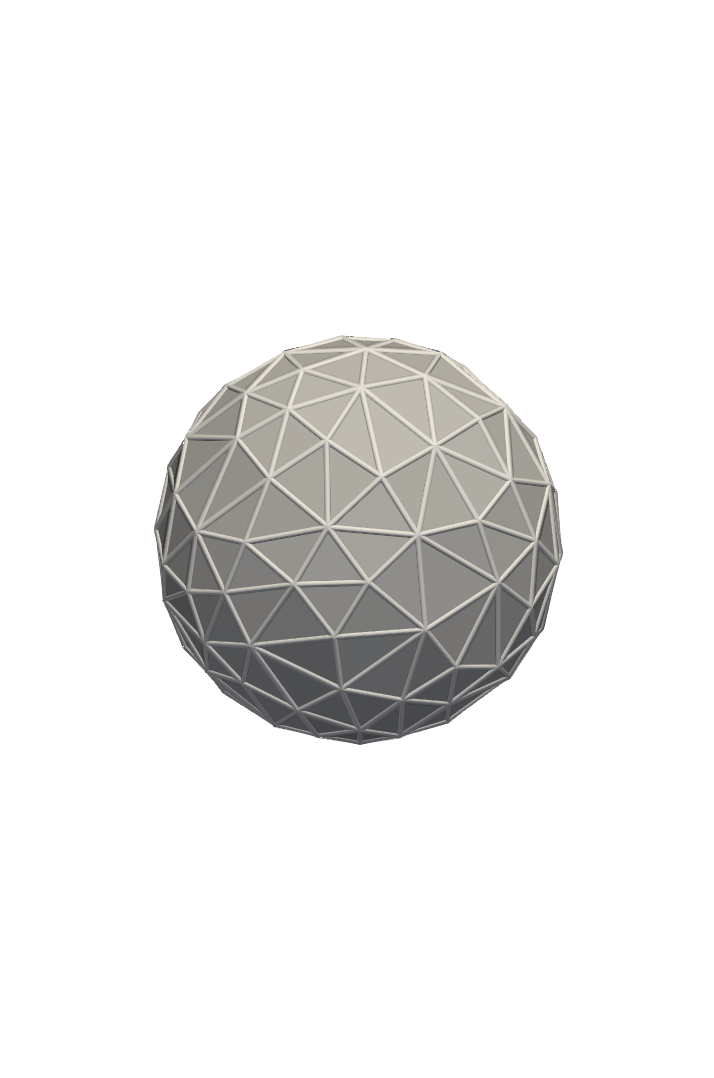
Step 1: Triangulate the surface

Step 2: FEM space \(S_h \subset H^1(\mathcal{M}_h)\) of p.w., continuous, linear functions
Problem 1: Approximate solutions live on \(\mathcal{M}_h\), not \(\mathcal{M}\)!
Given \(\eta: \mathcal{M}_h \to \mathbb{R}\), \(\eta^\ell= \eta \circ p^{-1}\) is on \(\mathcal{M}\)!
Step 3: Key tool in surface finite elements: the lift
Takeway: FEM error similar to flat case, up to a "geometry error" term
Main computational tool: FEM

Whittle–Matérn fields on the sphere
\(\left(\kappa^2-\Delta_{\mathbb{S}^2}\right)^\beta u=\mathcal{W}\), \(\beta>1/2, \kappa \neq 0\)
Question: What to do with fractional operator?
Dunford–Taylor integral representation:
Whittle–Matérn fields on the sphere
\(\left(\kappa^2-\Delta_{\mathbb{S}^2}\right)^\beta u=\mathcal{W}\), \(\beta>1/2, \kappa \neq 0\)
Question: What to do with noise?
Computable by standard SFEM!
Question: What to do with fractional operator?
Dunford–Taylor integral sinc quadrature:
Whittle–Matérn fields on the sphere
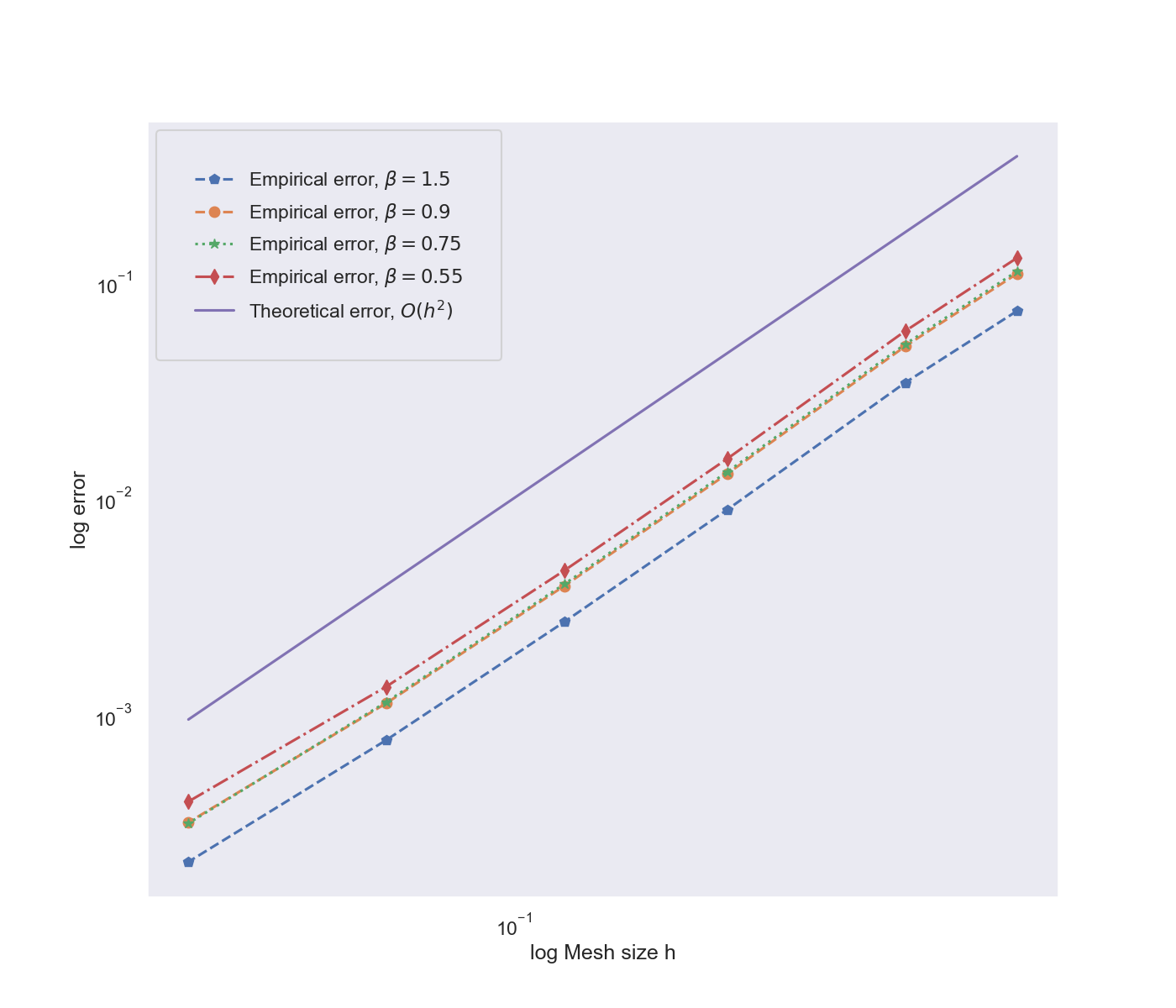
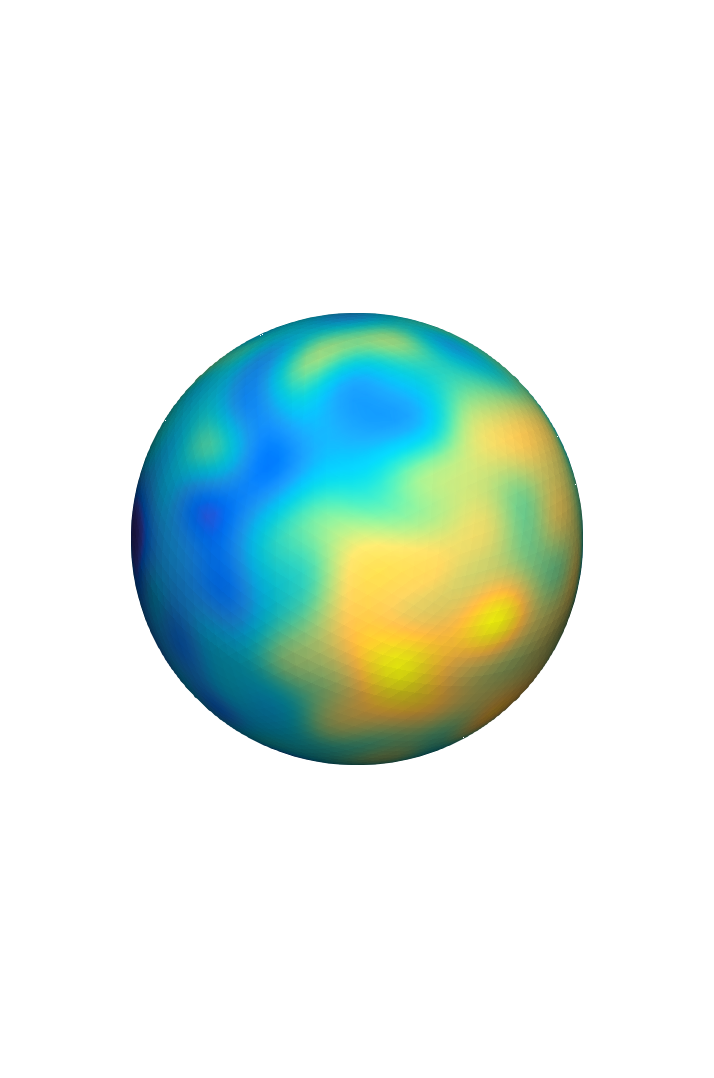

In E.J, Kovács, M & Lang, A, (2022) strong error bounds are proved.
Problem: How to approximate noise?
Solution: Different approach...
\((\lambda_i,e_i)\) are eigenpairs of \(\mathcal{L}\)
Use power spectral density \(\gamma : \mathbb{R}_+\rightarrow \mathbb{R} \)
Random weights \((W_i : i\in\mathbb{N})\) are Gaussian
Problem: Eigenfunctions are not known.
General surfaces: an outlook
General surfaces: an outlook
Solution (?): Approximation with SFEM basis functions
General surfaces: an outlook
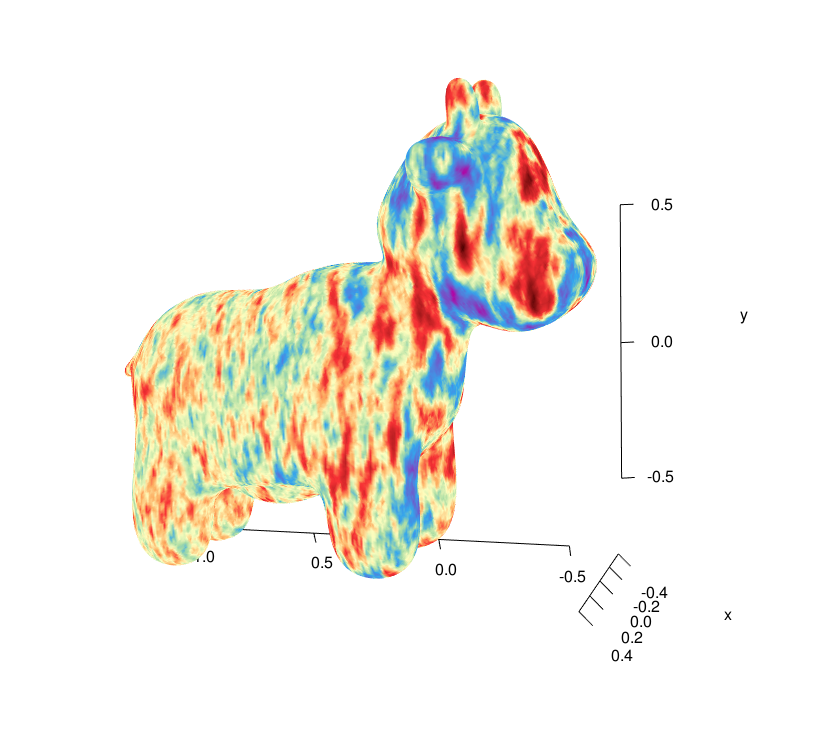
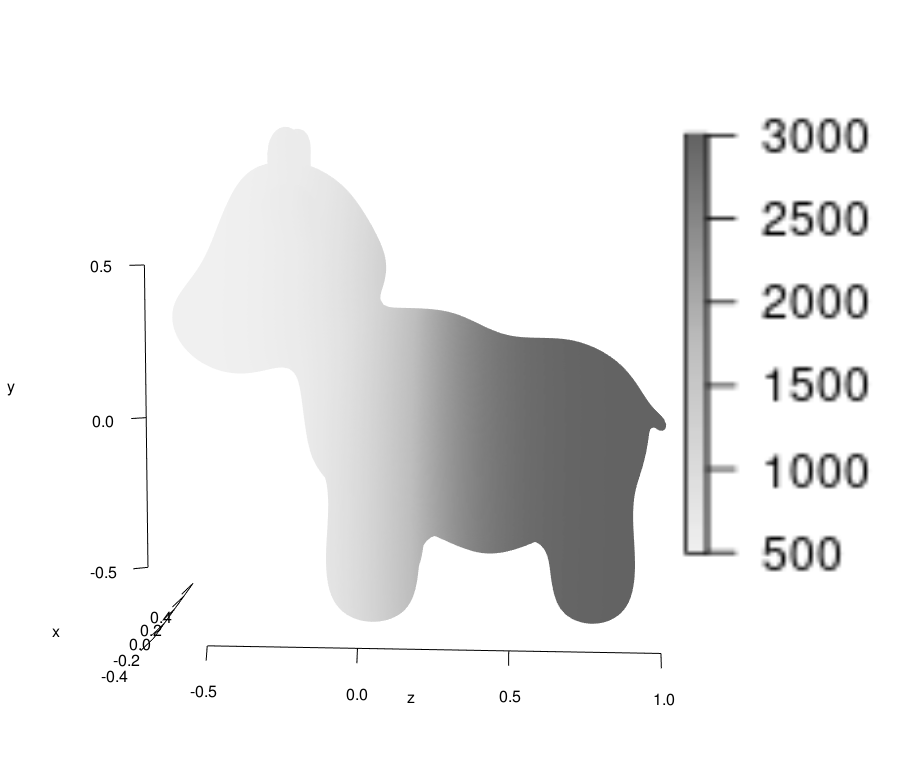
c(x):
small
large
A(x):
Pullback of \(\R^3\) metric
Inverse correlation length: small values, bigger spots.
Smaller correlation length along \(z\)-axis, elongation in that direction!
General surfaces: an outlook
